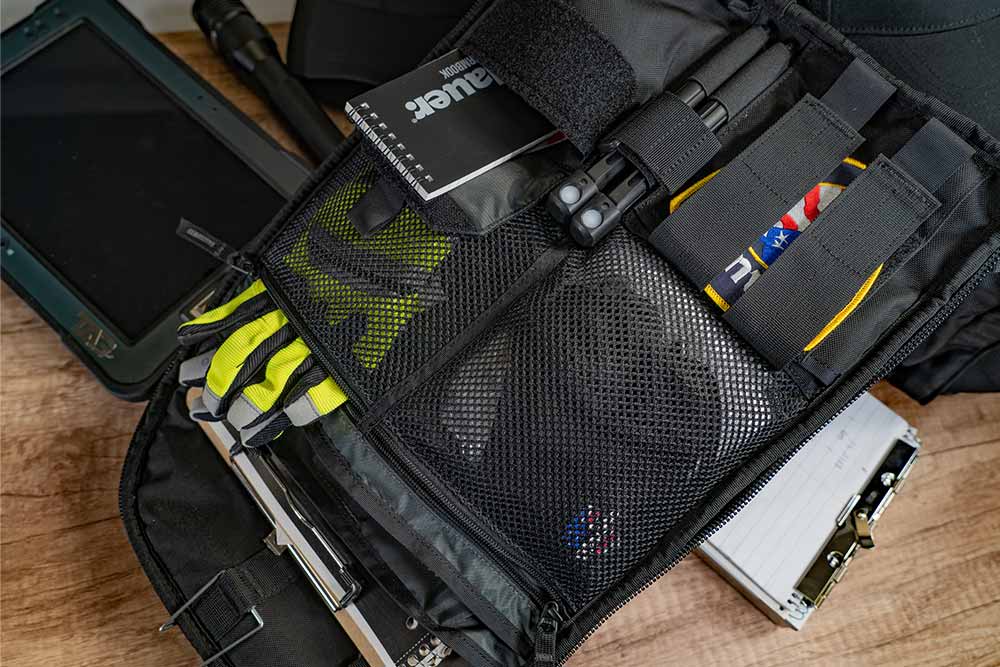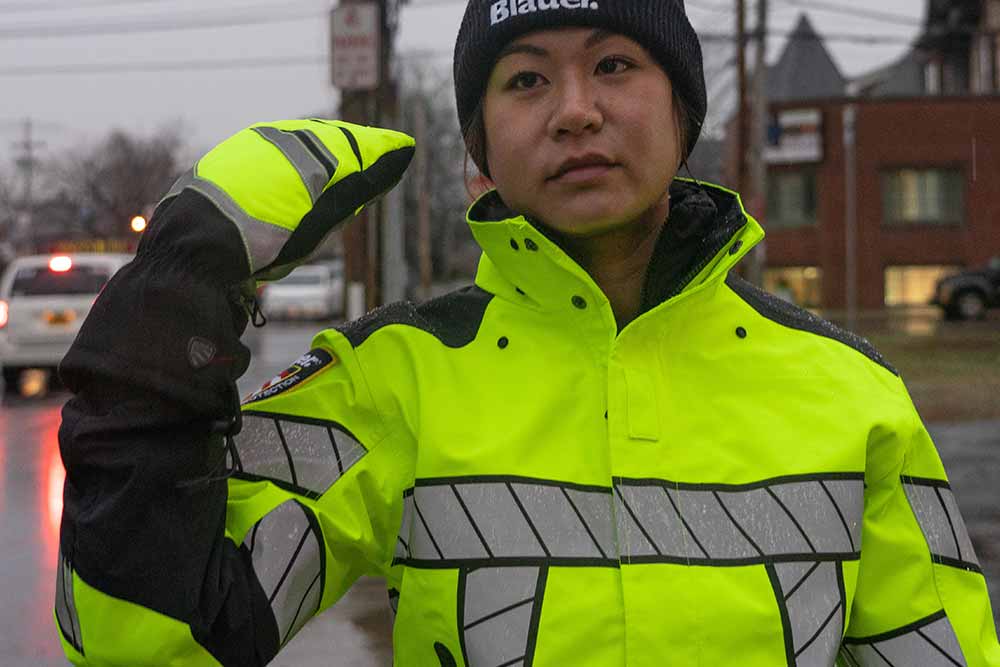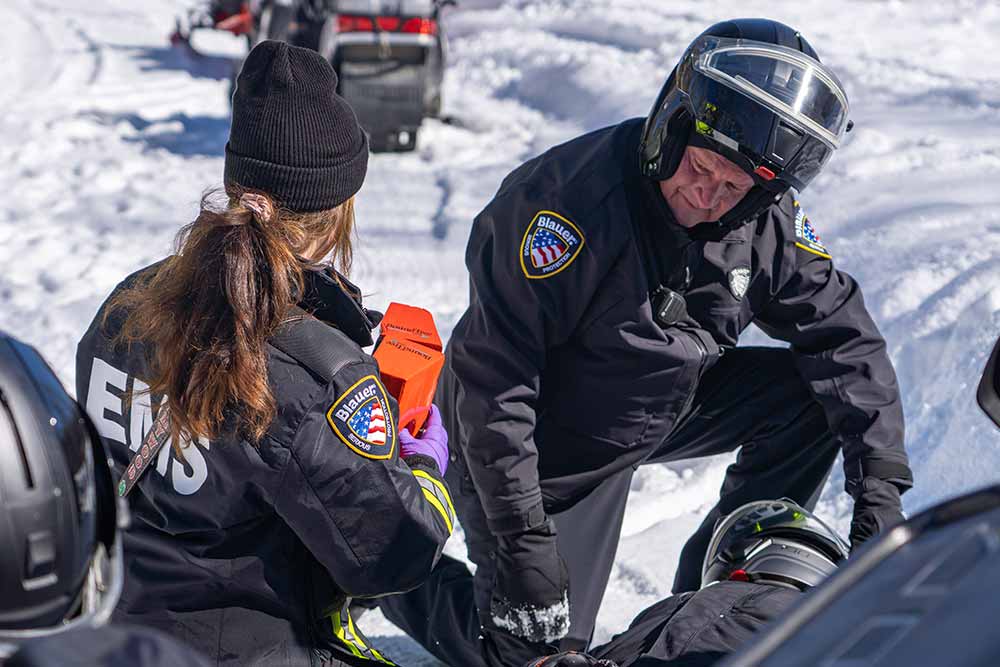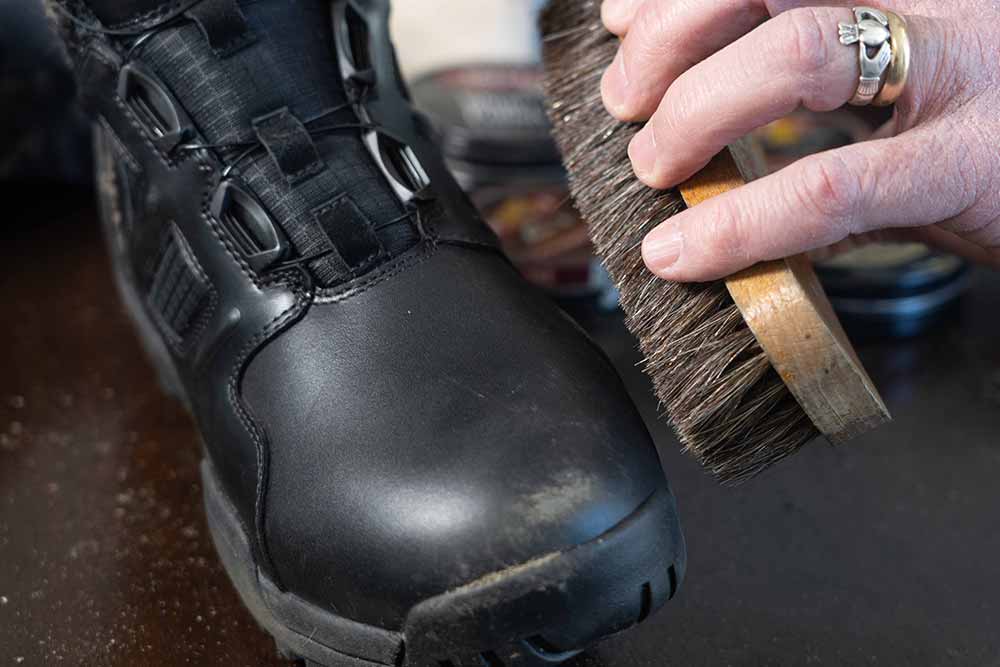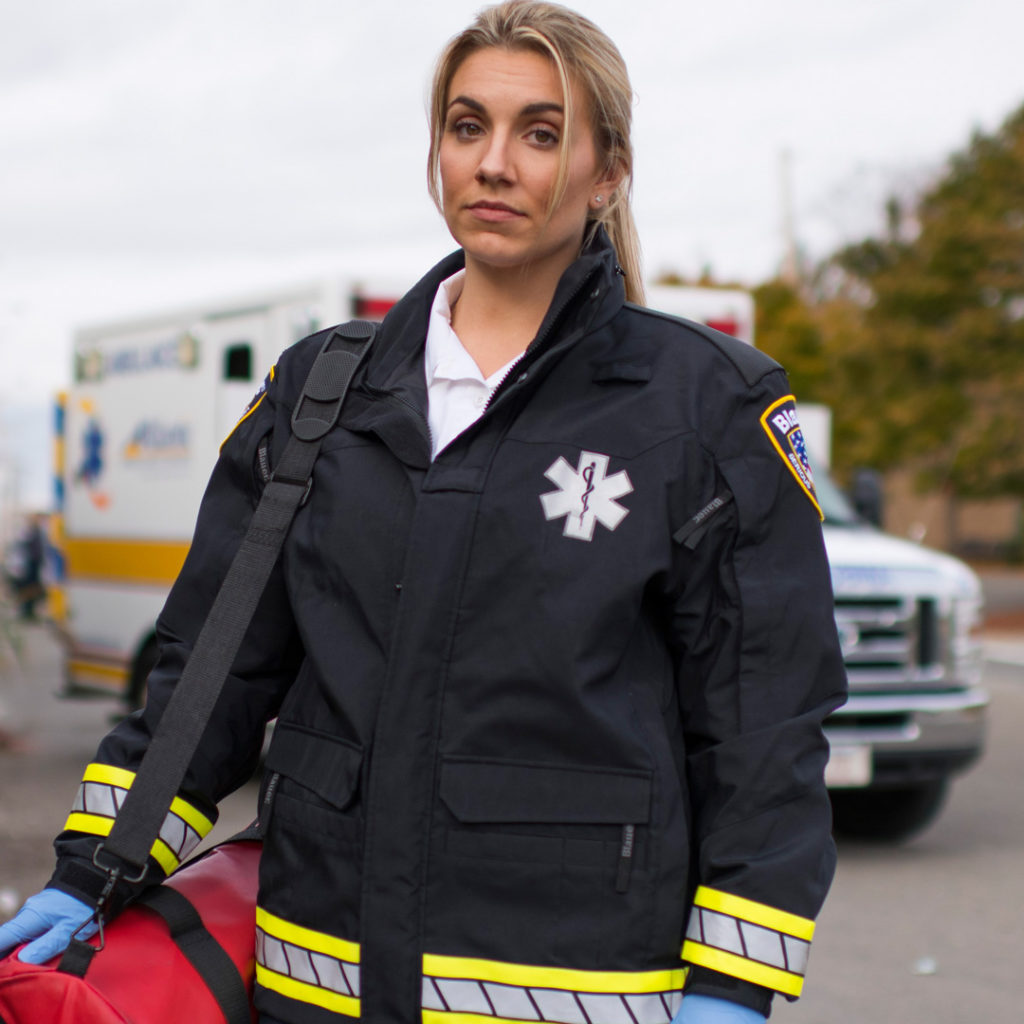

Everyone knows about EMT pants as a concept – lots of pockets with places for your trauma shears, an OPA, and the ever-necessary emesis bag. But there’s much more that goes into making a good EMT uniform – one that will help protect you from the fluids, general nastiness, and safety hazards that you’re going to encounter as part of your day-to-day role. Today we’re going to go through from top to bottom to give you an overview of how you should dress to give yourself the best “BSI, Scene Safety” possible every day.
The Scene Is Safe?
Most of us think about the concept of being safe in terms protecting ourselves with BSI such as gloves, masks, eye protection, or other PPE that shields our exposed skin, as well as by being aware of threats to our personal safety which originate from violence or vehicles. That’s well and good, but what about how well your uniform protects you from any of the above?
Let’s start with your feet. You will step in some ugly things every day you’re at work, including but not limited to bodily fluids and dirty floors with who knows what on them. (Side note for the new guys: never, ever kneel on scene if you can avoid it.) Now, most of us probably don’t take great care of our feet in general, meaning we’re going to have cracked or dry skin down there, and maybe even some cuts or ingrown nails.
All of these reduce the protection your skin can provide if something nasty comes in contact with them, and so it’s important to think about getting boots which provide pathogen resistance (such as Blauer’s Breach boot), or, at a minimum, wearing waterproof boots to keep the fluids out. In terms of other protection, you should also look for a composite toe boot (stretcher + toes = ouch) and one with a midsole shank to prevent the scenario where debris that you walk on pops through the sole and gives you a new, not-so-trendy piercing.
Moving up to your pants: many people wear pants that are made of cotton. This is great for breathability, but very bad in terms of handling bodily fluid contacts – cotton absorbs liquids and holds them, meaning that getting blood, sputum, CSF, or whatever on your pants is going to cause them to wick into the material and press against your skin. If you’ve got cuts or scrapes, that’s a big problem: nobody wants Hep C getting into their system thanks to a skinned knee. Much better is to look for pants that are a polyester blend, preferably one with a DWR (Durable Water Repellent) coating which will keep fluids out without reducing breathability. For an example, see Blauer TenX EMT pants.
Next we have your shirt. A lot of the same advice applies when it comes to materials choice, including if your agency wears a polo shirt – cotton is not a great choice for the reasons above. You should also seriously consider wearing long sleeves as much as possible, even if it gets hot outside. What you may lose in overall comfort, you gain in having the additional protection of a layer of material between your arms and your patient or environment. Some of that discomfort can be mitigated by choosing wicking base layers, or having a uniform shirt that has built-in heat control features like the side-panel mesh on our SuperShirt.
In terms of your head, you may want to consider wearing a ballcap for the protection that the brim may provide if your head is down looking, for example, at a monitor and your patient happens to decide to give the Cough O’ Many Droplets in the general direction of your eyes or other facial mucosal membranes.
How Others See You
Another consideration is what you’re wearing for visibility – not just when you’re out working that MVC, but in general. EMS doesn’t have the “I fear you are underestimating the sneakiness” concerns that law enforcement must consider in terms of not being noticed by people on their calls. If anything, we probably want to be more visible, as it helps with such things as quick visual identification of medical assets at MCI’s and other large events.
The key to all this noticeability: Hi Vis garments, and those with reflective components, are your friend. Not all of us need to be wearing “violent yellow” 24/7 while on duty, but if you’re going out into traffic, it’s important that the jacket or safety vest you do put on meets the new ANSI 107-2015 Type P certification (for more on that, read this article on reflective jackets) because it means that the garment has been scientifically certified to keep you visible by drivers and identifiable as a person in the roadway.
In terms of reflective materials in general, you can increasingly get them as part of the garments you wear, have the customization done at an EMS uniform store near you, or purchase iron-on reflective materials to “add on” additional visibility on your own (note: “TAXI” is not generally advisable text to add to your shirt, tempting as it may be.) One thing to note: so called “dark reflective” materials are not a good idea for garments – even though they look subdued, they bounce back only a small portion of reflected light to its source in comparison with standard “silver” reflective materials such as 3M ScotchLite™ or Oralite®.
Overall, as you can see, there’s quite a bit more that goes into choosing the proper EMT uniform for you than simply choosing something that labels itself an “EMT Pant.” If you make the right selections, your uniform can actually help to protect you against some of the hazards that you’ll meet out on the street, keeping you safer and ensuring that you can have a long and productive career helping take care of the population you serve.



